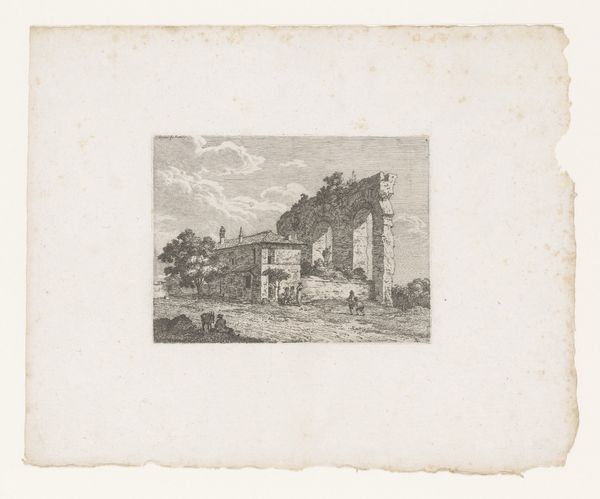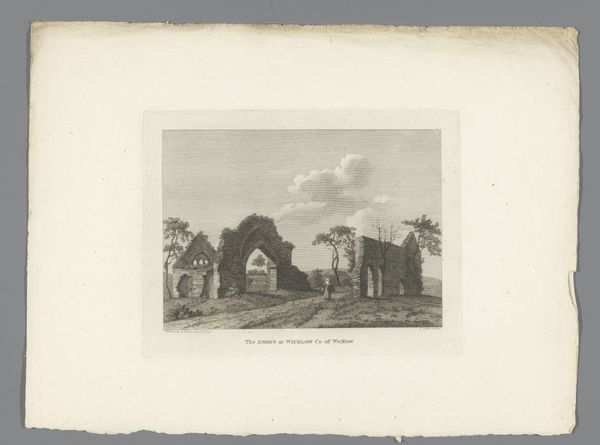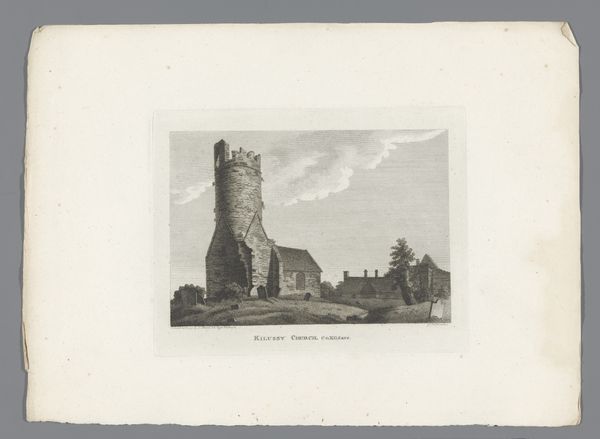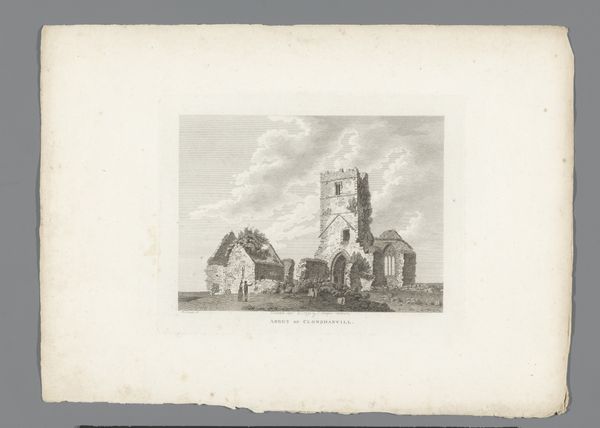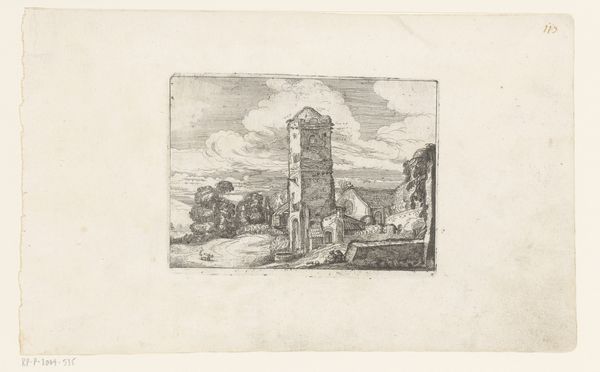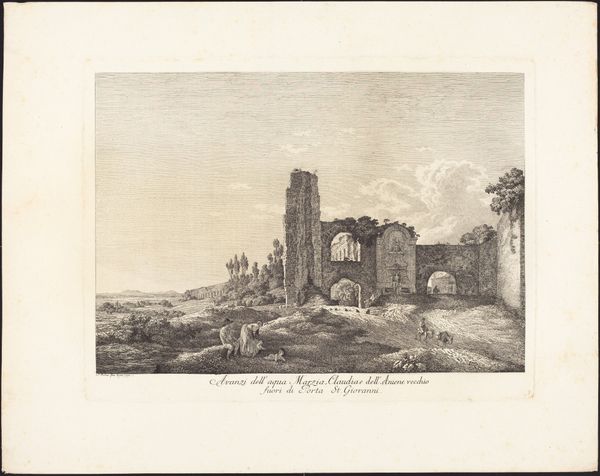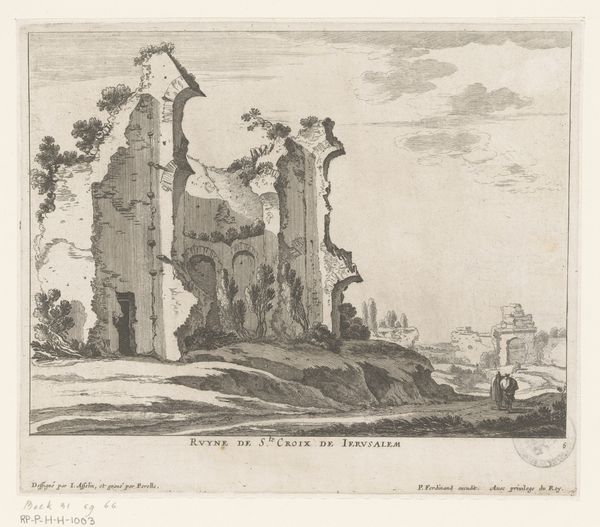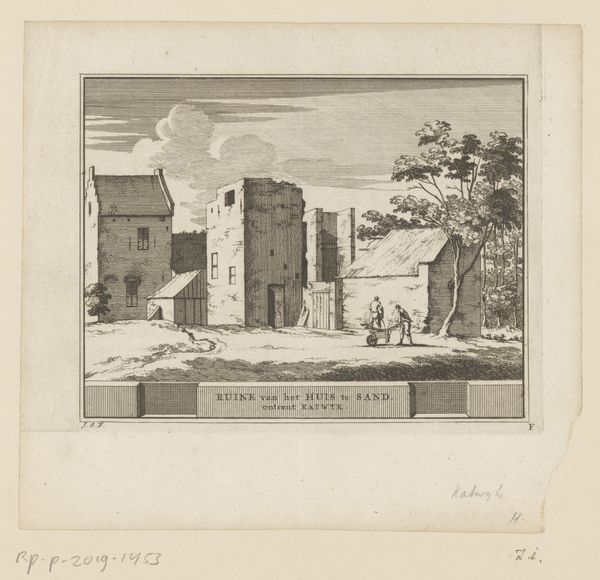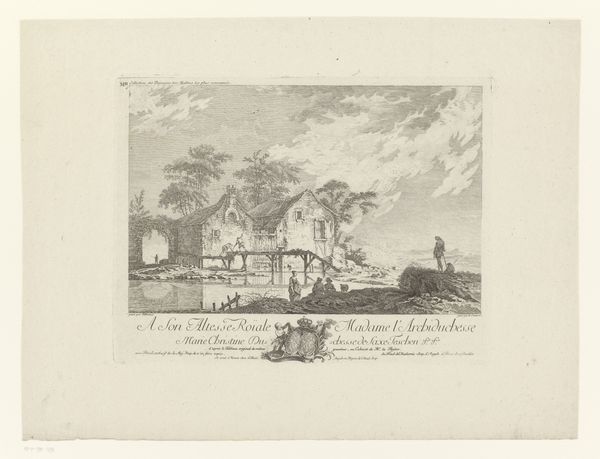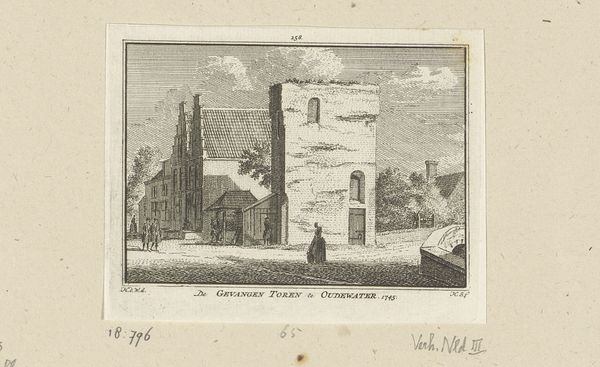
Gezicht op de ruïne van de abdij van Duleek vanuit het noordwesten gezien Possibly 1794 - 1797
0:00
0:00
drawing, print, etching
#
drawing
#
medieval
# print
#
etching
#
landscape
#
romanticism
Dimensions: height 150 mm, width 200 mm
Copyright: Rijks Museum: Open Domain
Editor: Here we have an etching, most likely dating from 1794-1797, titled "View of the Ruins of Duleek Abbey from the Northwest." It’s an atmospheric piece. What can you tell me about this work? Curator: Well, the choice of etching as a medium is crucial here. Etching allowed for mass production. Think about it: who was consuming these images and why? The growing middle class wanted access to landscapes, and the printing press made that possible. Editor: That's interesting. It's a print of ruins though, not just a pretty landscape. Why ruins? Curator: Exactly! Ruins became fashionable. Consider the labour involved in constructing such a massive building. What forces brought about its decline? The etching romanticizes decline and reflects on the societal shifts during its time: the commodification of nostalgia. It's also a comment on religious power in the past and the new orders that supplanted them. Editor: So the mass-produced image points to this yearning for a medieval past that the buyers wouldn't have actually wanted to live in? Curator: Precisely. These prints made the inaccessible, accessible. In considering prints like these, ask yourself about the materials used and who owned them. What impact did increased access to landscape images have? It is more than just art; it is a commercial product speaking volumes about society. Editor: I hadn’t thought of the consumption angle. Now I see how important considering materials and accessibility are to understand it. Thank you! Curator: My pleasure. Never forget to ask: how and why was it made, and who profited?
Comments
No comments
Be the first to comment and join the conversation on the ultimate creative platform.

